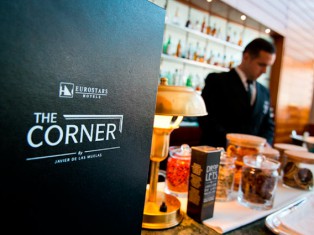THE ICE BY JAVIER DE LAS MUELAS
“Large blocks of ice that were carried by punches (today they are not used, however, they still remain being a passionate instrument in Sharon Stone’s hands), guillotined and served for one or two pesetas the piece, have given way to new geometries: cubes and cylinders.”
Ice, whose use today seems so normal and affordable, has been one of the most desired elements by man since ancient times. The Romans use to go to snowy mountains, in order to find large chunks of ice that they would carry on the backs of mules. For preservation, human used leaves and animal skin to protect the pieces of ice.
The conservation of this material was very difficult; it required a large number of people and conditioned buildings. Human have found the rests of “refrigerators” that were more than 2,000 years old in Xian, a Chinese city where the ruins of the famous terracotta warriors remain, of 27m long, 7m wide and 12m high.
Large blocks of ice that were carried by punches (today they are not used, however, they remain being a passionate instrument in Sharon Stone’s hands), guillotined and served for one or two pesetas the piece, have given way to new geometries: cubes and cylinders.
Some friends have told me that, in certain establishments, bartenders serve low quality drinks and the next day they wake up with a terrible headache. The explanation is simple: the use of a bad filtered ice, without an osmosis or a softening procedure. This non-filtered ice contains impurities that melt in the drink and that, with the gas of sodas, become pins to our body, which reach our brain and damage our neurons.
Ice is one of the keys of mixology. My favourite is the shape produced by the ITV machines: cylindrical, transparent and bright as if it was a diamond. A good ice is decisive if you want to give life to a memorable cocktail.
Today, there is no need of bringing water from the Scottish Highlands. It used to be a way and a tool for locals to become billionaires in the early twentieth century. We can fabricate ice cubes at home, in trays with bottled water (never from the tap). If we proceed to elaborate it correctly, we will avoid that comic but tragic sensation that appears when a Manhattan takes us to that loud fish shop in the corner of the street, rather than to New York.
SUBSCRIBE TO OUR NEWSLETTER
Do you want to receive on your email all the news of DRY Martini?
Subscribe to our newsletter and always be aware!







